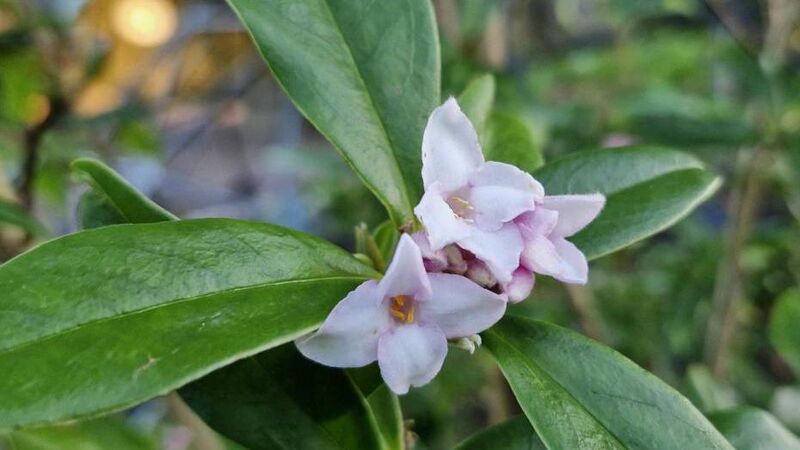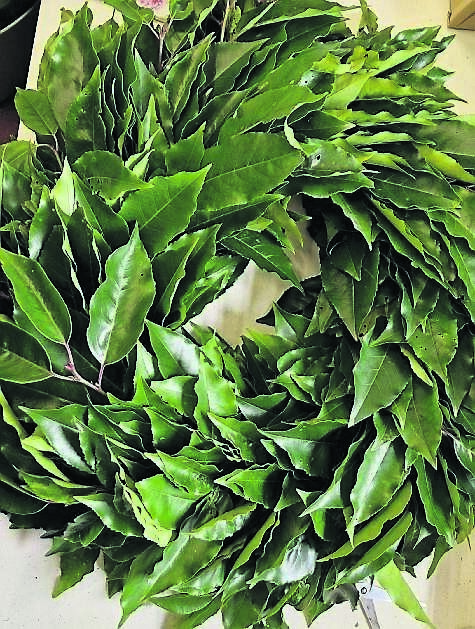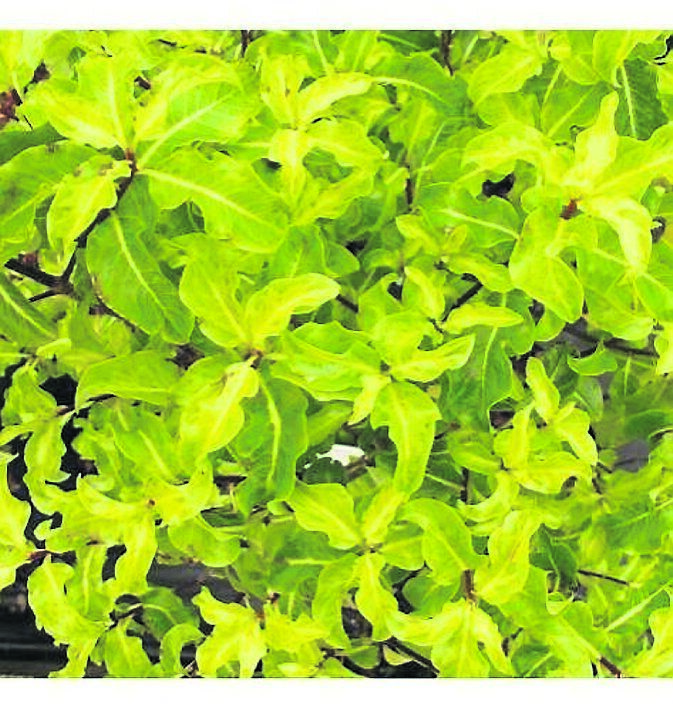In the garden: How to make the best use of evergreens

The Daphne bholua 'Jacqueline Postill' is just starting to flower in the garden.
December is always the month that evergreens start to come to the fore in the garden.
They are more conspicuous now that deciduous trees and shrubs have lost their leaves and herbaceous perennials are melting back down into the ground for the winter months.
They are very useful elements for providing structure in the garden over the winter months, as well as being used in seasonal indoor and outdoor floral creations like wreaths, table centrepieces, swags, and floral arrangements.
Ivy, mistletoe and holly are the traditional greenery used for decorating at the year’s end. In pre-Christian times, these evergreens were thought to ward off evil spirits and celebrate new growth. Now they continue to be used as they provide vibrant and long-lasting plant material.
Finding holly that is not too vicious with thorns is the ultimate in kindness to the hands, and the thorns tend to put me off using too much of this dark green glossy foliage.
Portuguese laurel (Prunus luisitanica ‘Angustifolia’) provides great foliage with red petioles or leaf stems adding to its allure.
Holm oak, or holly oak (Quercus ilex), also has waxy grey-green foliage that lasts well, which is an important factor when creating displays for the home as we want them to look good for a few weeks if possible.

Bay laurel (Laurus nobilis) and ordinary laurel (Prunus laurocerasus) are a good choice for longevity also. The tougher and glossier the leaves, the better the foliage will last once cut when it is not placed in water.
Conifers are also a great choice for long-lasting festive fresh foliage, and great scented foliage that evokes a feeling of Christmas is Noble fir (Abies procera) with the blue/grey tinge to its needles. Along with Nordmann fir (Abies nordmaniana), native to eastern Europe, and Norway spruce (Picea abies), these are three conifers popularly grown to harvest after a few years as Christmas trees.
Generally, they are grown for 5-10 years before being harvested as small trees two to three metres in height. Why not grow one of these fine trees in your garden as an outdoor Christmas tree where space allows?
If the tree is growing in the garden, then it can be used for foliage production also.
All of these trees get to substantial heights of between 20-40 metres when grown to full height, so some consideration needs to be given to where they are planted to ensure that they will have enough space to grow and that they are far enough away from existing buildings.
When planning the garden, again if space allows, it is worth considering including some of these evergreen plants to provide structure and foliage over the winter months.
Arguably, these are some of the months when we most need interest and hope in the garden.
Fragrance is another powerful uplifting balm to the senses in winter. One of the best shrubs for length of time flowering and intoxicating scent has to be Daphne bholua ‘Jacqueline Postill’.
It is presenting its buds already this December, and it will be smothered in small pink flowers until well into spring.
There are a range of Daphne cultivars to choose from varying in size and flower colour. Sarcococca, or Christmas box, is a subtle evergreen shrub that packs a punch in the perfume department. The flowers are small and inconspicuous and they fill the air with a heady scent - it does require an acid soil to thrive so keep that in mind.
Mahonia is another great winter shrub with dramatic spikey foliage and deliciously scented yellow flowers. The foliage is quite architectural in the garden, and because of the spikes it can be a bit prickly to work with if used in arrangements.
It may be a good idea to add some evergreen trees or shrubs to your garden this winter if you feel the balance is a leaning towards the deciduous. They will help to furnish the garden for winter, give shelter from weather event,s as well as creating shelter for wildlife and providing greenery all year round.
Hedging is probably one of the strongest structural elements in a garden, and yew is a great evergreen option, creating a solid dark green backdrop.
The last of the bulbs would be best planted before the year is out to ensure flowering in springtime, and it is always best to leave tulips until as late in the year as possible to avoid them sitting in wet soil and potentially rotting.
Remember to get any longer grass cut before the snowdrops appear as, if the grass is high where they are naturalized in the lawn, then it will obscure the delicate nodding white flowers of these early flowering bulbs, and once the bulbs have started to push above the surface of the soil, it will be too late to cut the grass as the flowering tips may also get the chop!
The biggest challenge at this time of the year will be to get a dry day to take out the lawnmower.
Plant of the Week
It has to be an evergreen this week, after all of the waxing lyrical about their merit in winter, and looking particularly good in the garden now is Pittosporum tenuifolium ‘Golden King’, which has, as the name suggests, bright golden foliage which gives a pop of colour to the garden.

Pittosporums are relatively easy to grow, requiring good drainage as they may develop root rot if soil is heavy. They will do best in full sun in a sheltered aspect as they do not cope well with severe winds.
There are many cultivars to choose from and this one gets to a height and spread of about 3m X 1m.






 App?
App?





